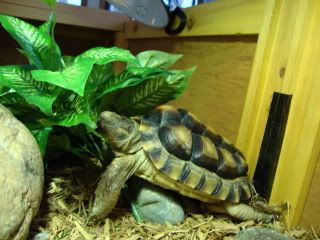RE: pyramiding
A smooth shell does not indicate that the tortoise is healthy. This is the same line of thought that a pyramided shell does not indicate an unhealthy tortoise.
A smooth shell does not indicate that the tortoise is healthy. This is the same line of thought that a pyramided shell does not indicate an unhealthy tortoise.
terracolson said:I see SO many leopard tortoises here in sac but all of them are pyraminded, what does a healthy one look like?


